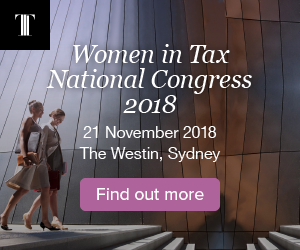This lead to then UK Prime Minister David Cameron’s famous ‘Wake Up and Smell the Coffee’ speech at the World Economic Forum in Davos, making Tax one of his three key ‘T’ focuses for the UK’s presidency of the G8 in 2013 (the others being ‘Trade’ and ‘Transparency’) and thus arguably kick-starting the Base Erosion and Profit Shifting (BEPS) movement. I suspect he would not have been expecting the impact his call to arms would have on the future taxation of multinationals.
Shortly thereafter the OECD’s Base Erosion and Profit Shifting Project commenced which set out 15 Action Items, with recommendations for each being reported in 2015. Those recommendations have then been taken up in various forms by tax authorities around the World, with the UK and Australia seemingly taking the lead.
This has lead to an increased focus on the taxation of multinational groups by tax authorities around the World, with each looking to tax multinational groups in their jurisdiction in new and expanding ways. At the same time, the globalisation of business has meant that it is increasingly more common and straightforward for non-resident businesses to operate in different countries from which they have their traditional businesses.
In the Australian resource sector this has played out in many ways, but none more so than the use of non-resident contractors to assist with resource projects. Whether it be through the construction and installation of resource infrastructure, including FPSOs, or through associated mining services, such a vessel leasing.
Putting all these pieces together means that non-resident contractors operating in Australia, together with their Australian resource counterparties, are faced with ever increasing complexity and reporting requirements as they seek to navigate the shifting sands of tax laws and regulations.
Matthew's session will provide an update on a range of measures that have relevance for
non-resident contractors operating in Australia. This will include non-resident contractor
withholding tax, the potential application of the Multinational Anti-Avoidance Law and
recent international developments with respect to when permanent establishments can
be held to exist.
Tax Residency and Permanent establishments
Before delving into the Australian tax requirements for non-resident contractors and their Australian counterparties, it is first important to determine the tax residency and permanent establishment (PE) status of the non-resident contractor. This is because, as we will see, they play a crucial part in determining the tax outcomes.
From a tax residency perspective, it is noted that there is an increased focus on ensuring that tax residency is not affected by central management and control of entities being held outside of formal Board meetings. In this regard, the ATO, for example, has recently issued Taxation Ruling TR 2018/5 that sets out its view on the subject. This debate, however, has a far bigger impact on foreign subsidiaries of Australian resident groups and therefore is unlikely to influence the residency of nonresident contractors. The main focus for this paper is therefore on whether the non-resident contractor has a permanent establishment in Australia.
The paper details the relevant domestic legislation, as well as highlighting some issues to be aware of with relevant double tax agreements, before looking at the BEPS impact and Multinational Anti-Avoidance Law (MAAL).
Non-resident contractor withholding tax (NRCWHT)
As the name would suggest, NRCWHT is a withholding tax that applies specifically to payments made by Australian entities to non-resident contractors. These provisions were brought in to ensure that non-residents operating in Australia were meeting their Australian tax obligations, with the withholding tax mechanism used as a result of the difficulty for the ATO in chasing non-residents for outstanding debts.
The default rate of NRCWHT is set at 5% on the GST inclusive amount of contract payments, however this can be varied in certain circumstances upon request. It is also a non-final withholding tax that can be refunded to the non-resident upon lodgement of an Australian income tax return that shows that the Australian income tax liability of the non-resident is less than the NRCWHT withheld.
The NRCWHT also does not apply to all payments and instead is restricted to payments for ‘works’ and ‘related’ activities within Australia. These terms are deliberately vague and broad and more detail on their meaning is set out in the paper.
This section looks at definition of works and related activities, some exclusions, and complexities with split contracts. The paper also notes that while the default rate of NRCWHT is 5%, it is possible for the non-resident to seek an exemption or variation in the rate of NRCWHT from the ATO.
Australian counterparty obligations
The paper concludes by setting out some thoughts with regard to the obligations for Australian counterparties engaging with non-resident contractors. It is important to note that where the non-resident contractor has an Australian PE by virtue of its Australian activities, it itself may have withholding and reporting obligations with regard to any payments made by the PE to other sub-contractors.
Here, Matthew looks at NRCWHT, Taxable Payments Annual Reporting, and contractual obligations, pointing out a number of key steps that Australian payers should take when undertaking activities with non-resident contractors.










